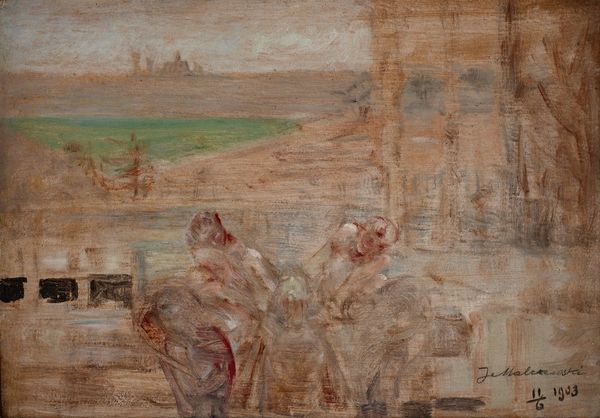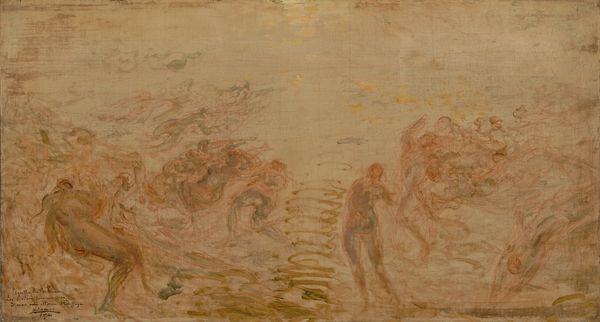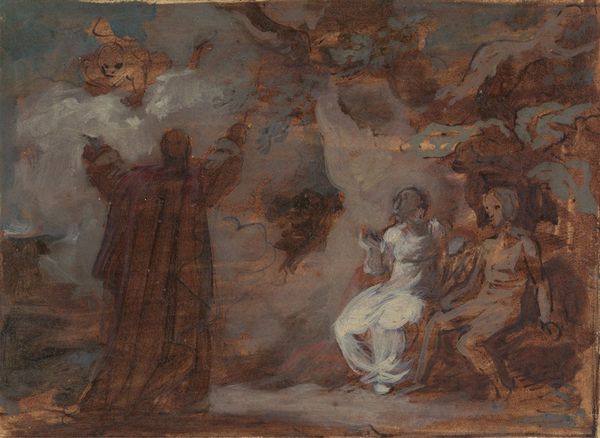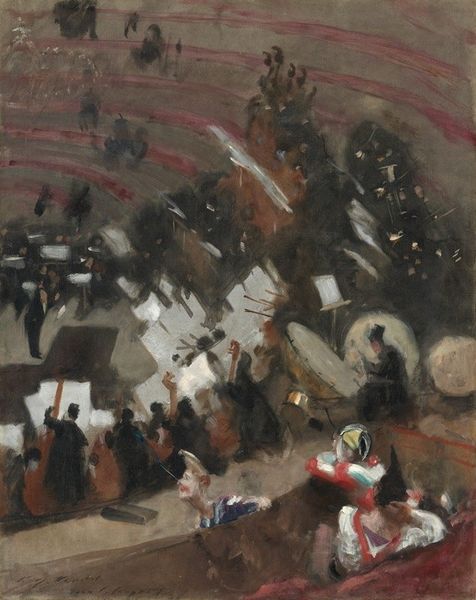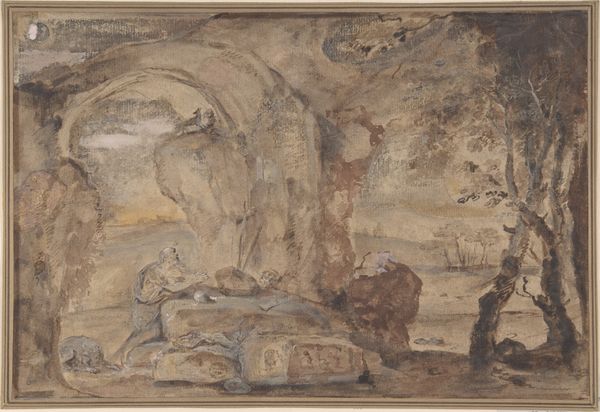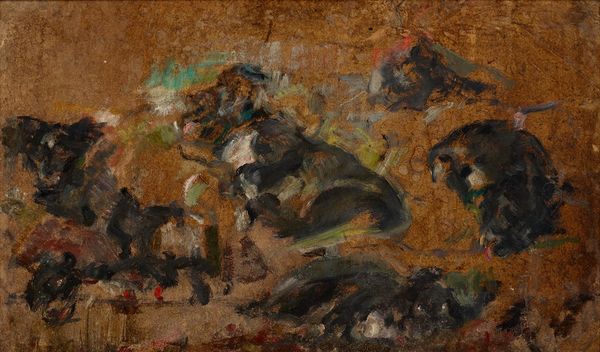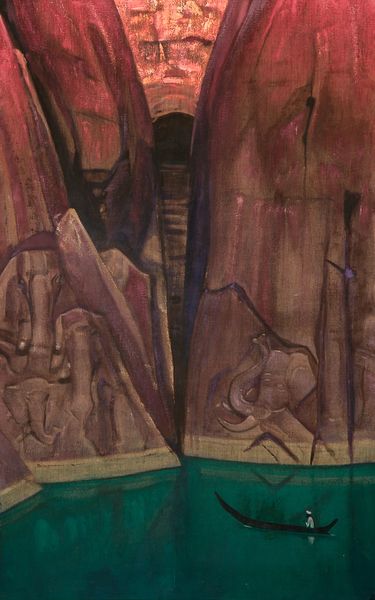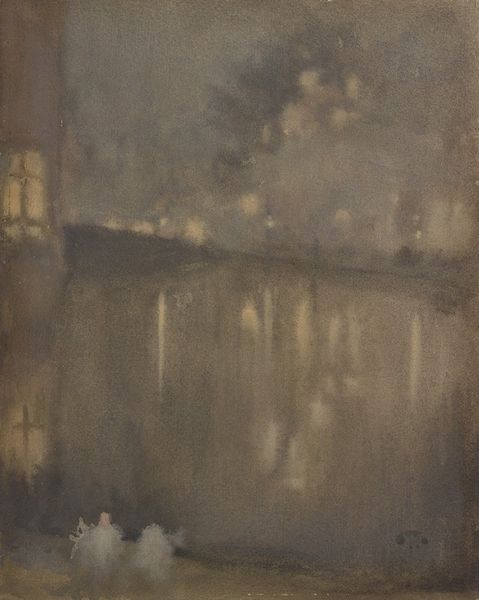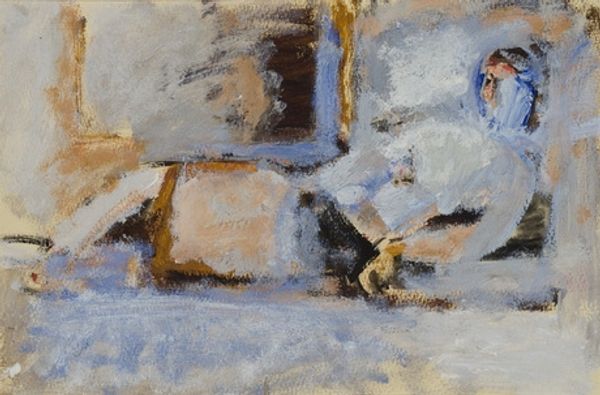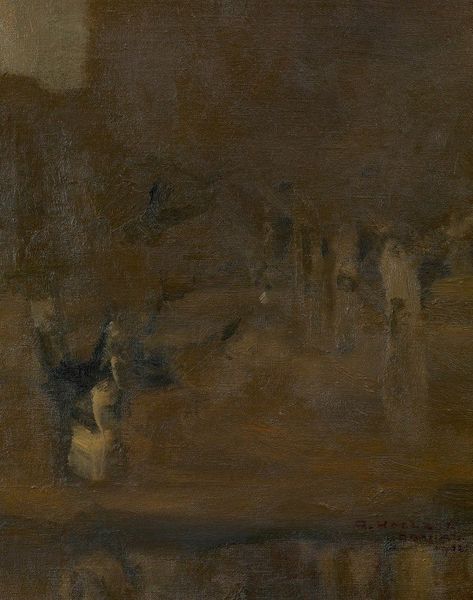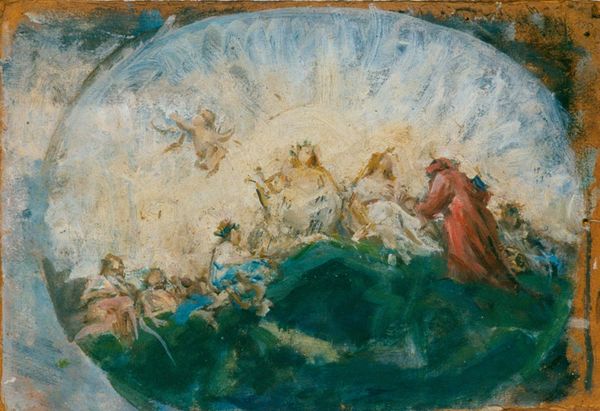
tempera, painting
#
tempera
#
painting
#
symbolism
#
genre-painting
#
history-painting
Copyright: Public Domain: Artvee
Curator: Welcome. Today we’re examining James Ensor's "The Wedding at Cana", painted in 1913, a tempera painting full of intriguing visual complexity. Editor: It feels immediately… overwhelming. A haze of figures dominates the space, a cacophony that almost vibrates off the surface. Curator: Precisely! The composition is divided into distinct zones—the elevated banquet table, the mass of onlookers below, and the almost ghostly architecture looming above. The colour palette is subdued, save for the brilliant light emanating from the table itself. Editor: What's striking is the way Ensor seems to position the elite around that blindingly bright table, a powerful symbol when contrasted against the swarming masses who seem to lack the enlightenment. It certainly poses questions of class and access to knowledge. Is this his critique of early 20th century Belgian society? Curator: One could argue that, certainly. Ensor's interest here seems less literal than allegorical, or even symbolist. Observe how the facial features of many figures are blurred, rendered almost mask-like. This contributes to a sense of drama that surpasses historical depiction. Editor: Masks suggest disguise, deception, hiding behind appearances, which connects to broader social themes around that time in Belgium and Europe in general: Who is invited to the party and why? Who gets to sit at the table? Curator: Ultimately, "The Wedding at Cana" provides more questions than answers. Ensor, in his characteristically peculiar style, presents not a biblical story but an introspective symbolic theater of light and shadow, a grand puzzle that remains tantalisingly unsolved. Editor: It leaves me pondering what other stories are embedded in that time. This canvas is alive with more than just color; it reverberates with political tension.
Comments
No comments
Be the first to comment and join the conversation on the ultimate creative platform.
